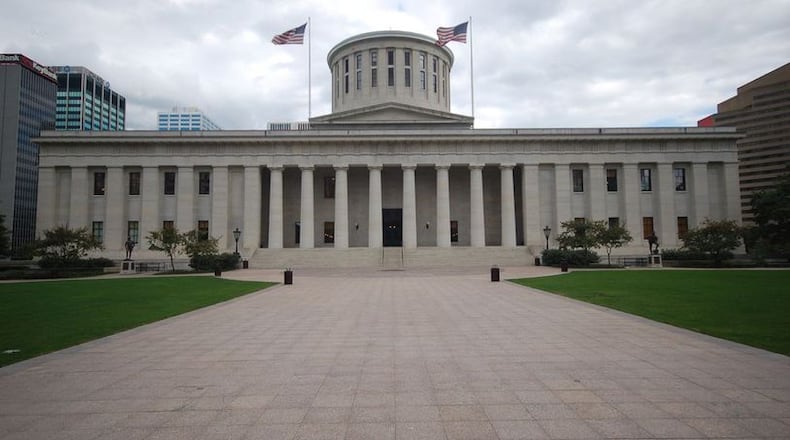Democrats and two independent but frequently allied groups have made their map proposals public. All three would create seven districts that lean Democratic and eight that lean Republican, which aligns fairly closely with the state’s overall partisan split. Ohioans voted 53% Republican and 45% Democratic in the 2020 presidential election.
Ohio’s current U.S. House delegation contains three Democrats and 11 Republicans, with two vacant seats to be decided in the general election Nov. 2. The 11th District was previously held by a Democrat and the 15th District by a Republican.
The General Assembly faced a Sept. 30 deadline to draw new maps, reducing Ohio’s U.S. House of Representatives districts from 16 to 15, as required by 2020 census results. Each of the new districts will contain about 780,000 people.
The new process for drawing those districts, established in 2018 via state constitutional amendment, says legislators must hold at least two public hearings before approving a map.
They have held no hearings so far. House Speaker Bob Cupp, R-Lima, said Wednesday that he knew of no meetings scheduled for drawing congressional district maps.
Now the job goes back to the Ohio Redistricting Commission, which on Sept. 15 approved new maps for state House and Senate districts. Those maps were approved at midnight on the last possible day, and passed the commission by a 5-2 vote without any Democratic support, meaning they will only be in effect for four years.
Three lawsuits have been filed against the state legislative maps, denouncing them as gerrymandered to preserve a Republican supermajority in both houses.
Cupp co-chairs the redistricting commission with state Sen. Vernon Sykes, D-Akron. Aaron Mulvey, spokesperson for Cupp and Republicans on the redistricting commission, didn’t specifically answer questions but provided a one-line statement Thursday.
“The speaker anticipates the work of the Redistricting Commission to be underway soon for the congressional maps,” Mulvey said.
“We do not know yet when the redistricting commission will convene again,” said Giulia Cambieri, Ohio Senate Democratic Caucus communications director and spokesperson for Democrats on the redistricting commission. “Sen. Sykes will reach out to his co-chair, Speaker Cupp, shortly to discuss that and set a schedule for the next meetings.”
Democrats look forward to reviewing a Republican proposal when one emerges, she said.
“We do not know when that may be,” Cambieri said.
The Ohio Redistricting Commission includes Gov. Mike DeWine, Secretary of State Frank LaRose, Auditor Keith Faber, Cupp, Vernon Sykes, Senate President Matt Huffman, R-Lima, and House Minority Leader Emilia Sykes, D-Akron. That gives Republicans a 5-2 edge.
The 2018 constitutional amendment says the redistricting commission must hold at least two public hearings and allow the public to submit map proposals. If commissioners cannot approve a bipartisan map by Oct. 31, the job goes to the General Assembly once again, which must act by Nov. 30.
If lawmakers at that point can approve a map by a 3/5 majority vote, including at least a third of Democrats — three in the Senate and 12 in the House — then the map will last for a decade.
Failing that, the General Assembly can pass a map by a simple majority vote, but like the recently approved state legislative map it would only be in force for four years.
Ohio Senate Democrats released their map proposal as Senate Bill 237, with Sens. Sykes and Kenny Yuko, D-Richmond Heights, as primary sponsors.
Fair Districts Ohio and the Ohio Citizens Redistricting Commission also released maps. Both organizations are supported by voting rights groups, various progressive groups and minority advocates.
Fair Districts Ohio sponsored a public map-drawing contest which received nearly 40 entries since Aug. 27. The first-place winner was John Hagner of Yellow Springs.
“Redistricting is all about trade-offs, but what this map shows is that it’s possible to balance minority representation, representative fairness, and competitive districts with boundaries that make sense and reflect Ohio communities,” Hagner said in the Fair Districts Ohio news release. “Tortured lines, and split communities, and districts that sprawl across the state are deliberate choices to make elections less competitive, and we can demand better.”
About the Author

